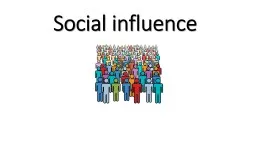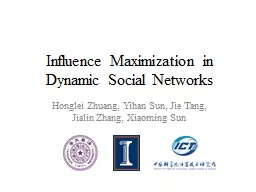PPT-Social influence Key questions
Author : pamella-moone | Published Date : 2018-11-02
1What is conformity 2Why do you think people in society conform 3What is obedience 5Who in society do we obey 6Can you think of examples where people in society
Presentation Embed Code
Download Presentation
Download Presentation The PPT/PDF document "Social influence Key questions" is the property of its rightful owner. Permission is granted to download and print the materials on this website for personal, non-commercial use only, and to display it on your personal computer provided you do not modify the materials and that you retain all copyright notices contained in the materials. By downloading content from our website, you accept the terms of this agreement.
Social influence Key questions: Transcript
Download Rules Of Document
"Social influence Key questions"The content belongs to its owner. You may download and print it for personal use, without modification, and keep all copyright notices. By downloading, you agree to these terms.
Related Documents














